Car Heaven
So this is where cars go to die! This is the Chatillon Car Graveyard in Belgium. This village somehow ended up as the site where cars used by US soldiers were left to gather rust and moss. Cars were left after soldiers could not afford to ship them back to the US. But, interestingly, while it's often written that these were abandoned when World War II ended, this isn't the case.
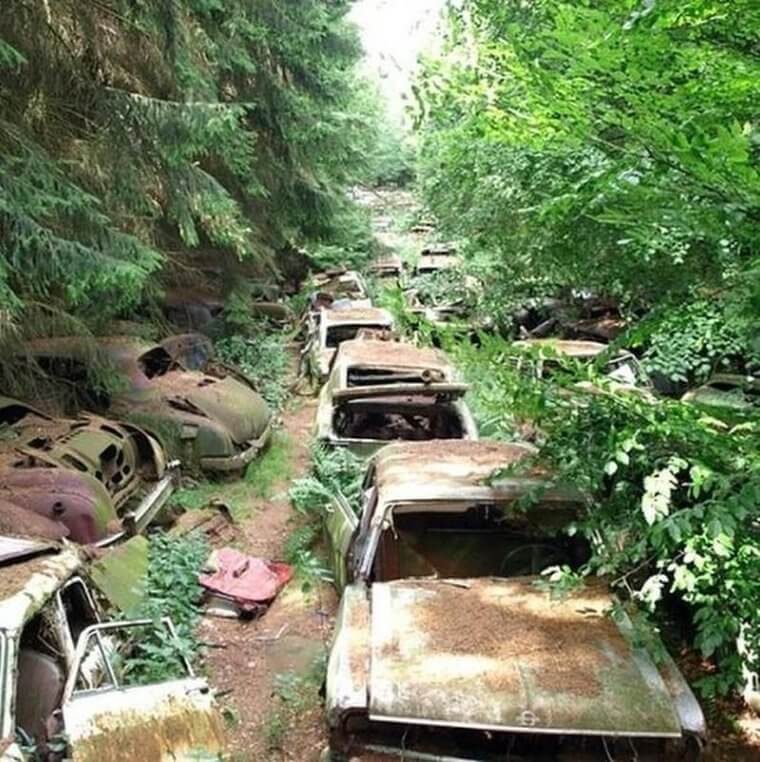
In fact, many of the cars weren’t made until the 1950s and are the legacy of former NATO employees who came to the area from Canada after World War II.
The Tiger Stadium: Go Get ‘Em Tigers!
It’s hard to imagine fans cheering for the Detroit Tigers when looking at this sorry image of their former stadium strewn with trash. You can just imagine the tumbleweed blowing around these sad-looking stands. And the bleak mood doesn't improve when you consider the Detroit Tigers haven't won a World Series victory since 1984. But at least the pitch still looked pretty green when this image was taken. The Tiger’s former home was finally demolished in 2009.
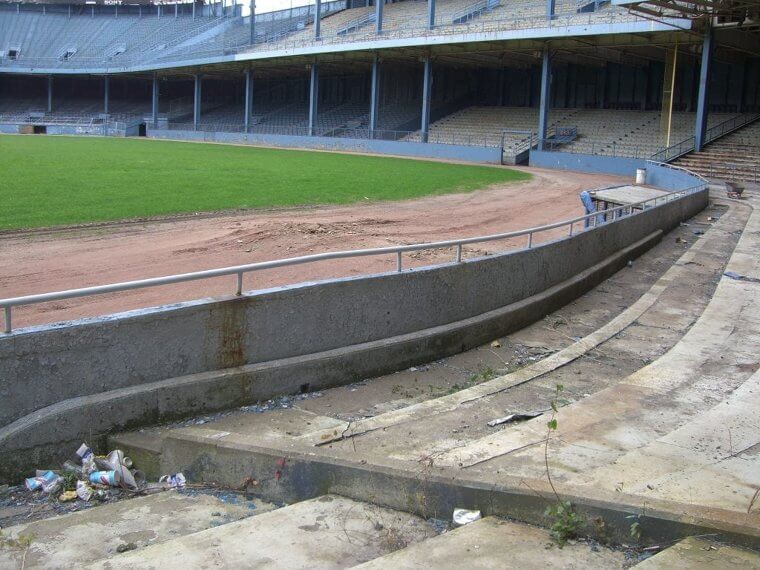
This happened despite it being declared a State of Michigan Historic site in 1975 and joining the National Register of Historic Places in 1989, earning it a place in the history books, if nothing else.
A Hurricane Katrina Reminder
This deserted and spooky-looking theme park is a stark reminder of the hurricane that struck New Orleans and the Gulf Coast on 25 August 2005. In the aftermath of Hurricane Katrina, The Six Flags Theme Park was destroyed and left submerged in floodwaters. In 2000, it was initially called Jazzland but joined the Six Flags group in 2003. However, the park was abandoned after the hurricane, and the gates were locked.
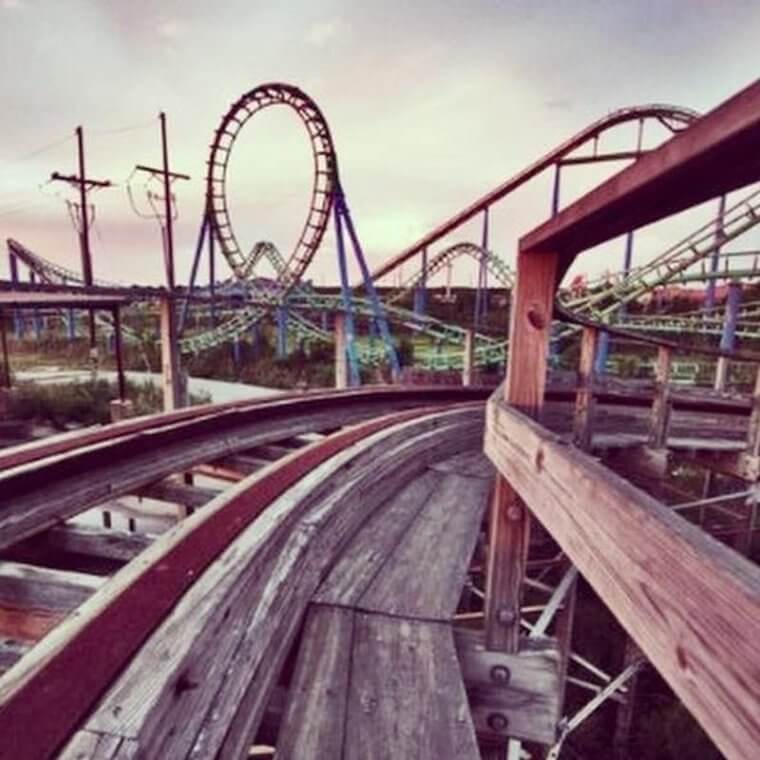
The site was taken over by the city of New Orleans in 2009 and is currently billed to be a hotel, water park, amusement park, and STEM center. So, watch this space!
Lucy the Elephant
This is Lucy the Elephant, once also known as the Elephant Bazaar when first built-in 1881. Remarkably, this was once a hotel in Margate City, New Jersey. It's made from tin sheets and wood, has six stories, and was built by James Vincent de Paul Lafferty to attract developers. Lucy has somehow survived hurricanes, fires, and rot. But, despite that, she fell into disrepair and is now maintained by the Save Lucy Committee.
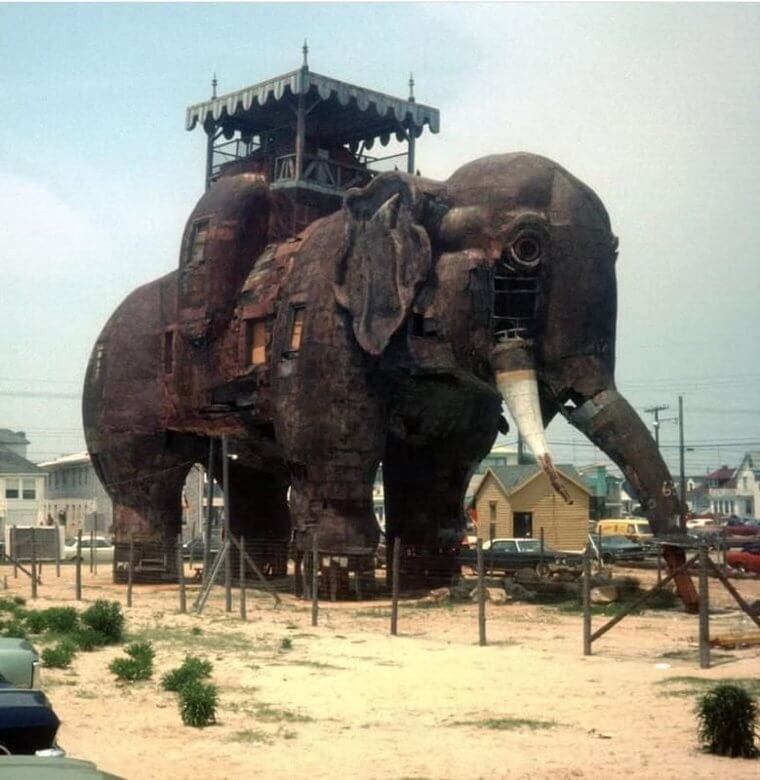
Today she's undergoing restoration, and visitors can book tours of the site. In February 2020, the New York Post wrote that Lucy was available as an Airbnb for $138 a night, the price reflecting her calendar age.
Abandoned Jet in Kazan City, Russia
You would be forgiven for thinking this is an optical illusion. The TU-144 Supersonic Passenger Jet is in an enclosed courtyard surrounded by trees and old buildings. Built in 1975, the plane flew 357 flight hours across 180 flights, most of which were supersonic and nicknamed Concordski by Western observers. It made its final journey in 1985, landing in Kazan, where it was housed at the Institute of Aviation of the Kazan National Research Technical University.
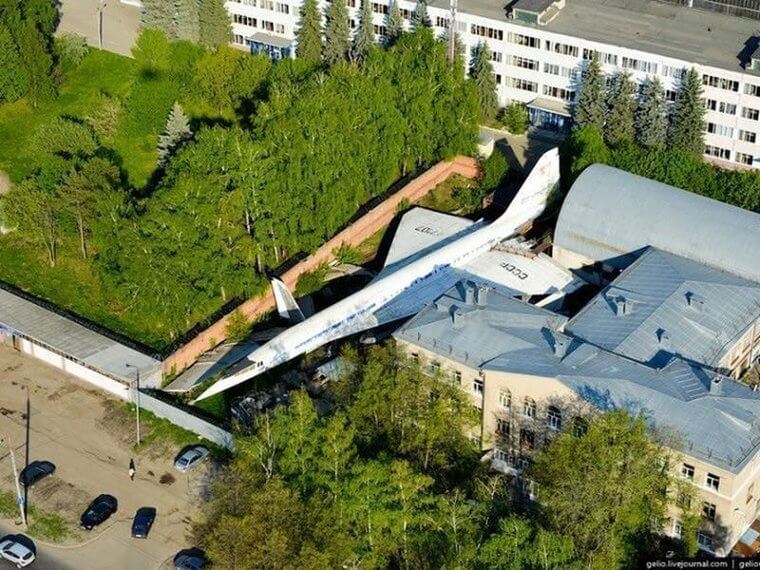
It was subsequently taken apart, piece by piece, and reassembled (as seen in the photo). Now, the aim is to make this historic plane an interactive museum for visitors to enjoy.
Ghost Towns in China
No, this is not a typo; these really are abandoned towns, plural. These were first spotted around 2006. Upon first glance, you would be forgiven for thinking they were the result of some sort of apocalyptic natural disaster. However, they're actually an example of under-occupied developments that include underground train stations, stores, and all the infrastructure commonly associated with towns and cities. Some reports state there are around 50 of these throughout China, totaling 65 million vacant homes.

Considering that China has around 687 cities, 50 doesn’t necessarily seem that much in the grand scheme of things, but try imagining walking around one of these abandoned metropolises alone at night!
South America’s First Olympics
South America hosted its first Olympic Games in 2016 in Brazil. Like all Olympic Games, this event was hailed as the sporting event on that year’s calendar. Held in Rio de Janeiro, technically speaking, they were Winter games because that’s what the season was in Brazil at the time. But, hosting historic sporting events does not come cheap, and these were no exception, coming in at a whopping $14 billion.
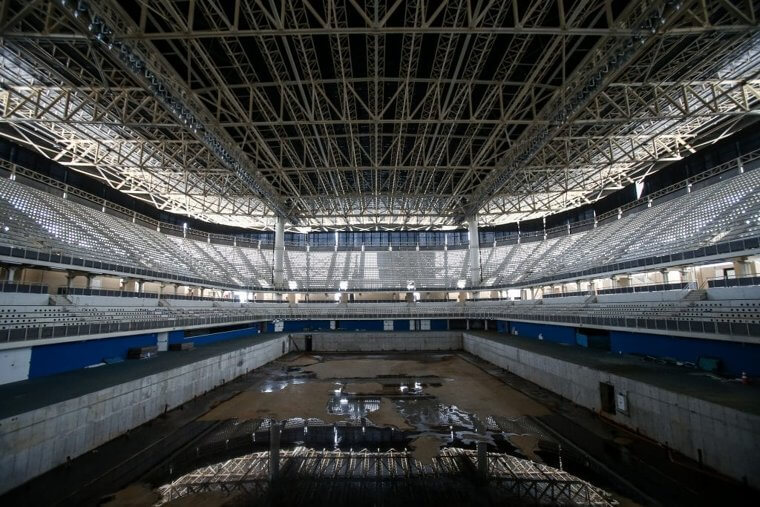
After the games ended on 21 August 2016, and Brazil celebrated its team winning seven gold, six silver, and six bronze medals on home turf, most sites were subsequently abandoned.
Jumping For Joy
This could easily be mistaken for a partially built roller coaster ride at a deserted theme park. Still, it’s actually an abandoned ski jump. The Nansen ski jump was built in 1936 in Milan, New Hampshire, US. This town with a population of 1,300 is the location of what was once the largest ski jump in the eastern US and was intended to be a training site for Olympic jumpers from the east coast.
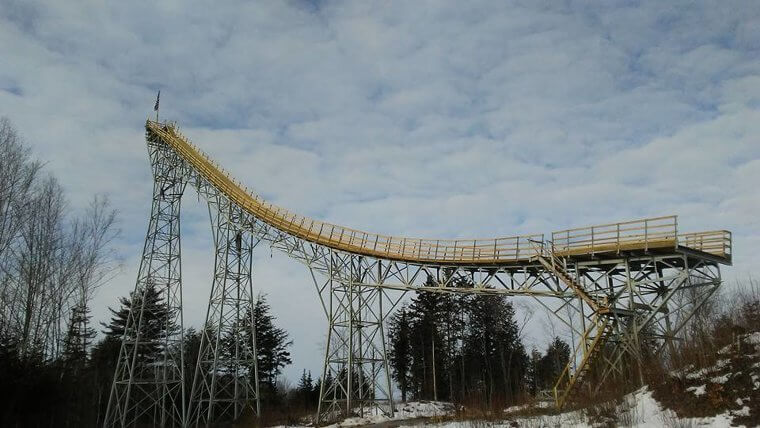
But, sadly, the site fell into disrepair in the 1980s, remaining so until 2015 when the Friends of Nansen began ongoing work and fundraising to bring the jump back to its former glory.
The Swinger's Tiki Palace in Tennessee
This abandoned 5,600 square foot Tennessee pleasure palace in the Smoky Mountains was initially destined to be the home of strip club owner Billy Hull. It was built in the 1970s, it included a Playboy bunny pool (pictured), as well as a jacuzzi, sauna, tons of mirrors, and TV monitors in each room. Unfortunately, Billy was later convicted of tax evasion and hiring a hitman to murder his wife’s boyfriend.
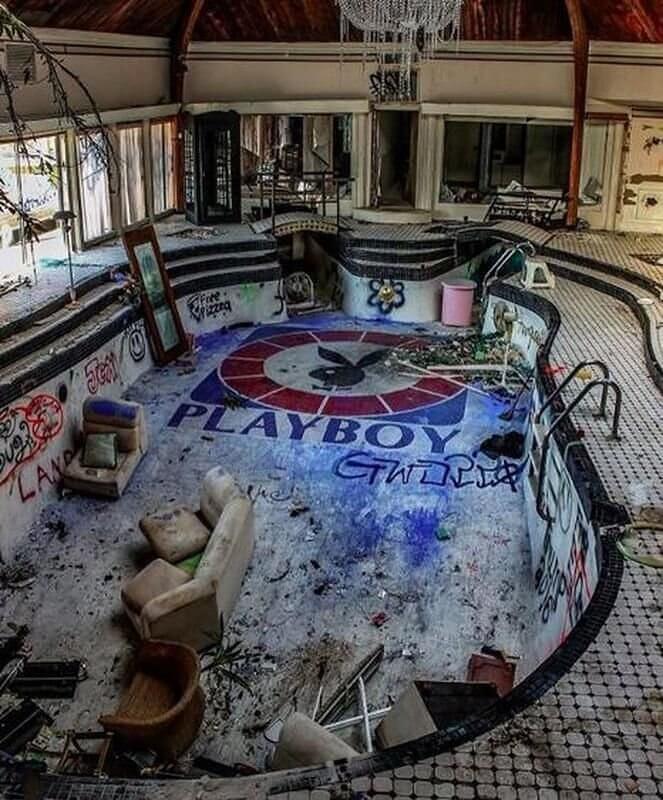
He received a 20-year sentence for the latter crime as well as two other murders. The house fell into ruin, and this image tells us what happens when the party’s definitely over.
The Mir Diamond Mine
This location makes us think of a sci-fi movie set or an unexplained extraterrestrial happening. But, in fact, it's neither. Instead, it’s the site of an abandoned diamond mine in Mirny, Eastern Siberia, Russia. The mine itself closed back in 2001. But, it was the biggest diamond mine in the Soviet Union when it was operational. At 525 meters deep and 1,200 meters in diameter, it’s one of the world’s biggest quarry holes.
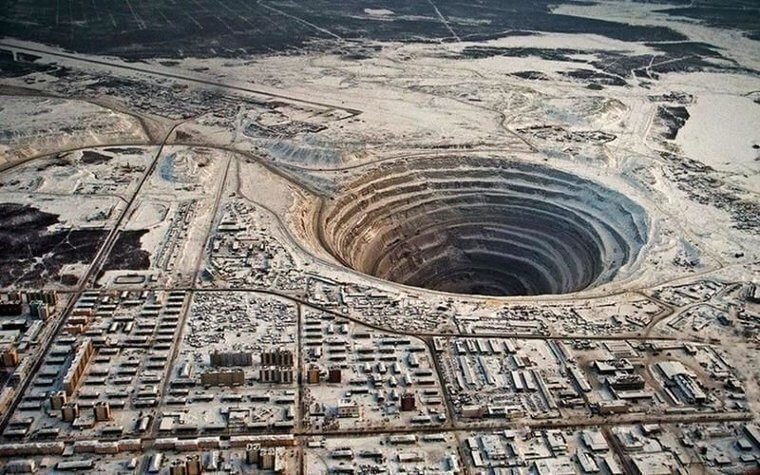
The mine ran from the 1950s, and most of the town’s population worked there. The crazy weather only adds to the all-out spook factor, with an average temperature of -46F (-43°C) in January!
The Mets Former Home
This deserted stadium was once home to the New York Mets in Queens. Thousands of fans supported their beloved team here at the Shea Stadium between 1964 and 2008 for 45 seasons. It is also where 55,000 screaming fans watched the Beatles play on 15 August 1965. The stadium also boasted a whopping 21 escalators, two rotating stands, and 54 restrooms. In fact, five World Series were even held here!
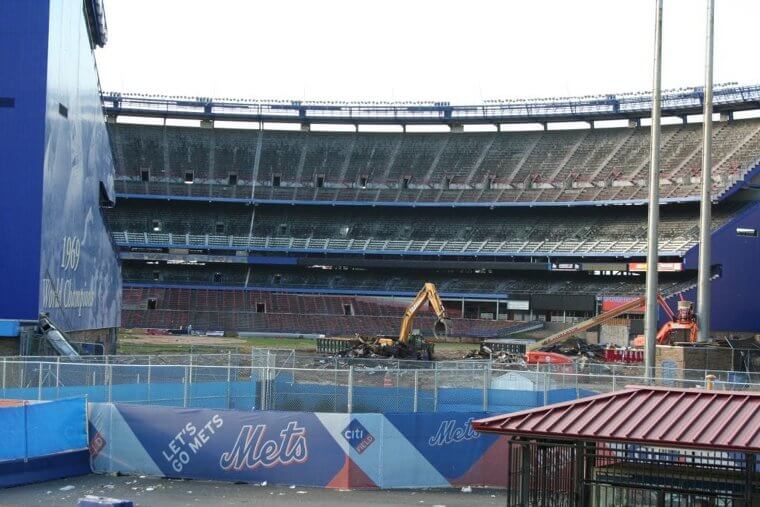
The Mets held their final game on 28 September 2008, losing 3-4 to Pittsburgh. Today, the Mets play at the $850 million Citi Field Stadium, having demolished the Shea Stadium in 2009 and turning it into a parking lot.
Creepy Hotel on a Columbian Cliff
Imagine passing this place when there’s a mountain mist, and it’s easy to see why this has a creepy feel to it. It’s the Hotel Del Salto in Colombia. Once a residential home, it became a hotel in 1928, drawing visitors thanks to its beautiful landscape and views of the Bogota River. But, unfortunately, industrial waste contaminated the river, causing visitors to stay away. Now, sadly, the site is associated with suicide.
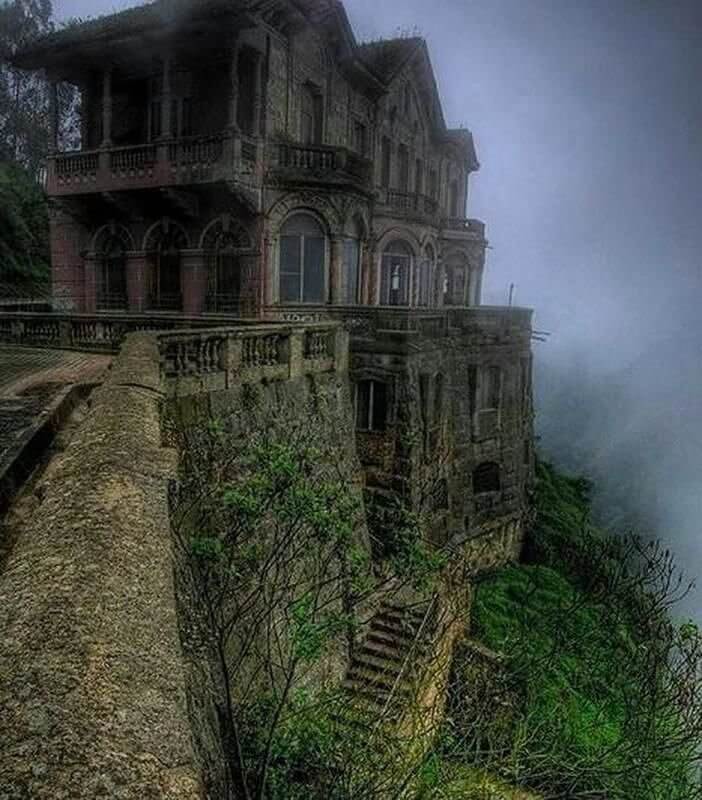
Rumors also circulate that this hotel is haunted, adding to its spooky and sorrowful air. However, from 2011 it's since undergone restoration and is now a biodiversity and culture museum.
Holland Island House
The first settlers to arrive on Holland Island in Chesapeake Bay, Maryland were in the 1600s. By 1910, 350 people lived on the marshy island, making a living from fishing or as watermen. The island had stores, a school, a church, and a post office. Sadly, in 1914, erosion and rising sea levels affected the island. So, people began to leave in droves, with the last inhabitants moving in 1918.

By 2012, the island disappeared from view; only this house remains, providing a resting place for birds. The rest of the town is submerged, and the island's remains are deserted.
The Sarajevo Olympics
Examples of abandoned former sites of Olympic glory are plentiful, including this bobsled track from the 1984 Winter Sarajevo Olympics. This much-anticipated sporting event was held in former Yugoslavia. But, sadly, what followed was a harrowing and destructive period in the country's history, with the Siege of Sarajevo starting on 2 May 1992 for 1425 days. The Serbian army relentlessly hit the city daily, killing as many as 11,541 adults and children.
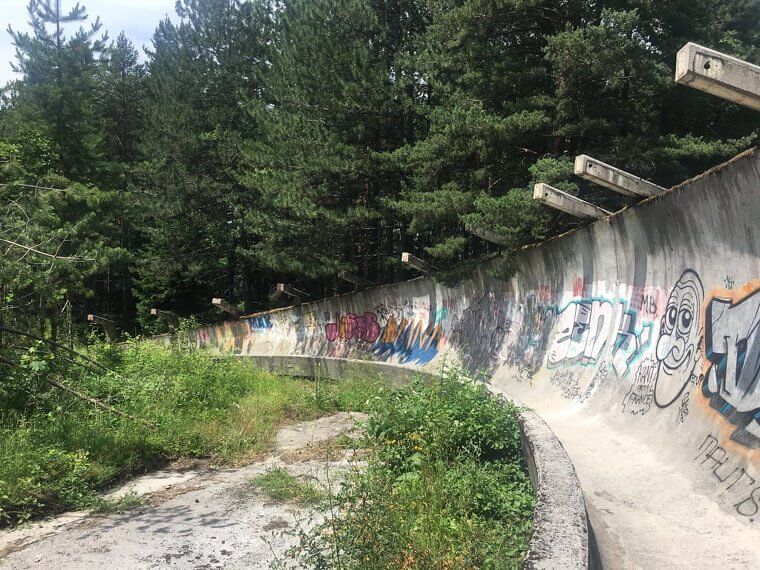
Where victorious Olympians once stood in triumph and glory. Instead, we now see the evidence of violence, destruction, and death resulting from the war that followed almost a decade later.
A Deserted Shop, Fukushima, Japan
On 11 March 2011, 9.0 magnitude earthquake caused a nuclear accident at a power plant in Okuma, in the Japanese region of Fukushima. It also triggered a gigantic tsunami, killing 18,000 people and destroying tons of towns in its wake. More than 500,000 residents were forced to evacuate their homes and businesses, some never to return. This deserted and ruined store is one of many examples left from that terrible day.
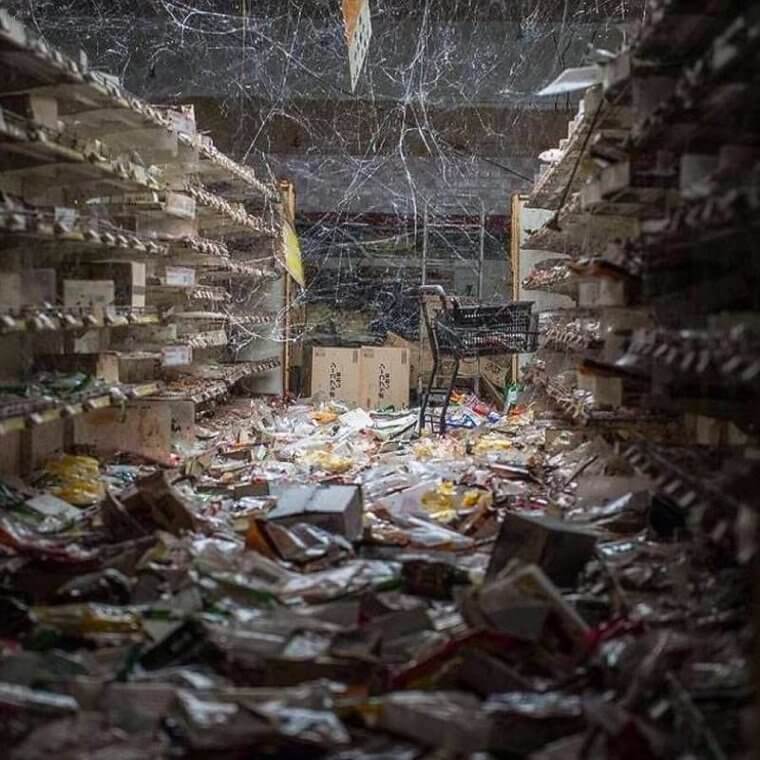
The resulting wreckage is evident with abandoned goods, shopping trolleys, and creepy cobwebs stretching across the aisles and ceiling. Unfortunately, this is all that remains, which only adds to the post-disaster ghost-town feel of the area.
Mysterious Dome Houses
This image is actually of one house consisting of six dome or igloo-shaped structures on stilts in Cape Romano island, near Naples, Florida. Built by oil producer Bob Lee, who moved into his new eco-home in 1982, the domes were solar-powered and inhabited by Lee until 1992. The three-bedroom, three-bathroom house was sold in 1989. While it survived several hurricanes and tropical storms, it fell into disrepair in the 1990s when it was abandoned.
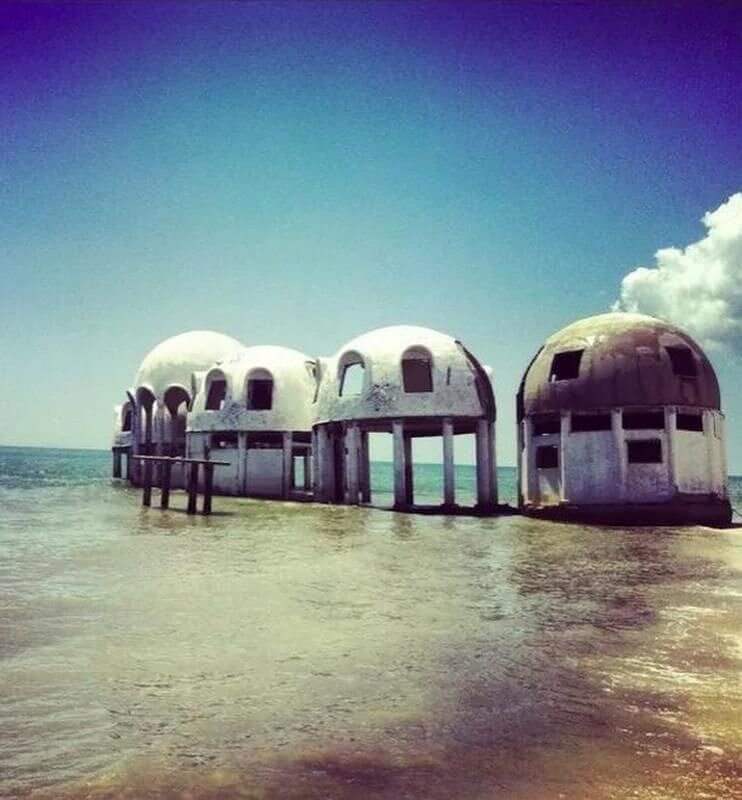
Bought by John Tosto in 2005, sadly the domes in this picture are no longer salvageable. They can only be reached by boat after falling prey to the elements, including Hurricane Wilma.
An Abandoned Woodland Cottage, Stradbally Island, Ireland
This derelict cottage reminds us of Little Red Riding Hood’s house in the Dark Forest, where she lived with her family. Although for us, the comparison stops there since there’s no real menace in this image. Just light peeking through the green and yellow leaves of the trees and onto the unusual blue roof of this old derelict home. We can imagine flexing our DIY skills here and turning it into a beautiful holiday home.

Imagine hiding from the crowds in this cute blue-roof bolt hole. It is the perfect place for a spot of novel writing...or practicing how to be a hermit. Either way, it would make the perfect weekend getaway!
Estadi De Sarrià Stadium
This is a tale of two sports teams. The city of Barcelona, Spain, has two soccer teams in La Liga, Spain’s premier division. Most famously, there’s FC Barcelona, the team that Lionel Messi played for until recently. Less famously is RCD Espanyol, although it has its fair share of die-hard fans. We’re looking here at an image of its former stadium, Estadi de Sarrià, used by the team between 1923-1997.
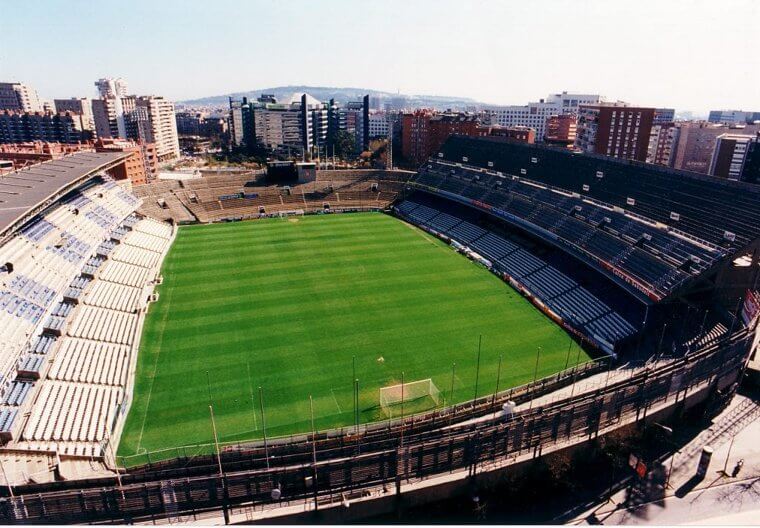
This stadium also hosted five soccer games during the 1992 Olympics. Fast forward to today and RCD Espanyol plays its home games at a new(ish) stadium on the outskirts of Barcelona.
The Stone Mountain Tennis Center
Initially built for the 1996 Olympics in Atlanta, the Stone Mountain Tennis Center was big, with a stadium court and 15 other outer courts to its name. It cost an impressive $22 million to build. After the Atlanta games, where the US was number one in the medal count for the first time since 1984, the venue hosted the Olympic tennis games and subsequent tournaments, including the 1998 Davis Cup.
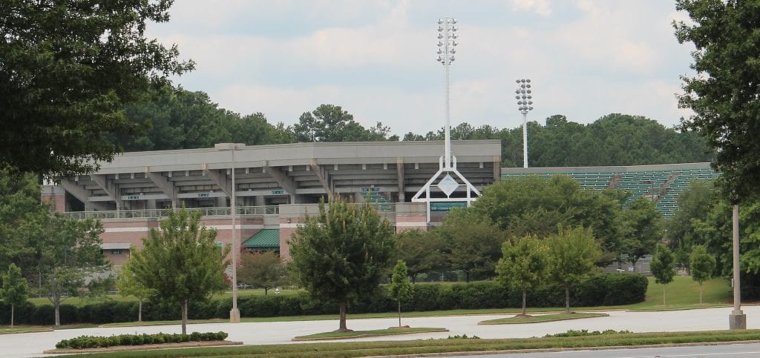
It finally closed in 2007, falling into disrepair, and was eventually demolished in 2018 to make way for a mixed-use development project, including family units and stores, across the 26-acre site.
Pripyat Stadium
Stadiums and sporting venues are abandoned for many reasons, but here's another stadium in the Ukrainian town of Pripyat that's testimony to a major disaster at the Chernobyl nuclear plant in 1986. The Chernobyl nuclear accident is widely believed to be the worst in history, resulting in many deaths and the evacuation of 350,000 people. This image is of the nearby town’s stadium where residents watched many a sporting event.
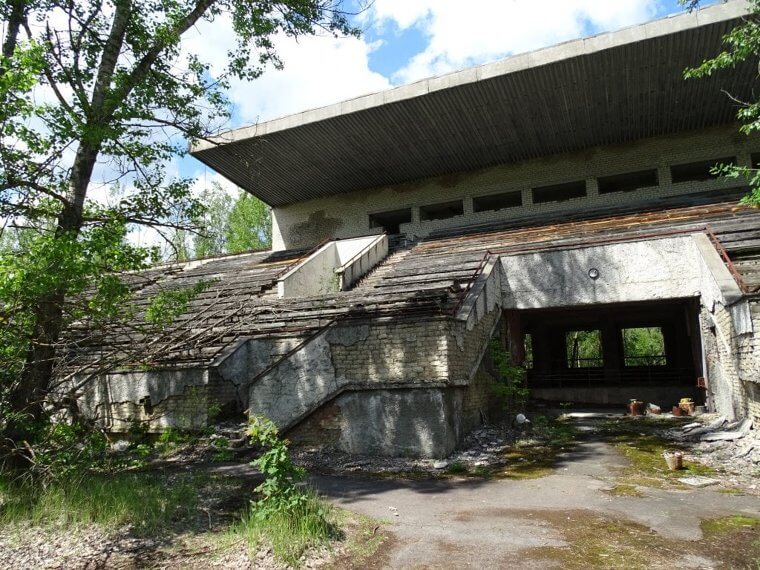
Plant workers, the town’s residents, and people from the wider area experienced radiation sickness and contamination. In addition, millions of acres of agricultural and forest land were also contaminated. Sadly, the site continues to be heavily radiated to this day.
Christ of the Abyss
The scuba diver here could be forgiven for thinking he’s having a spiritual experience. Here we see a bronze statue of Jesus Christ looking towards the pearly gates, deep in the waters of the Mediterranean Sea. Standing 2.5 meters high, the figure is 17 meters below sea level. It was created by sculptor Guido Galletti and installed in August 1954. It was removed in 2003, renovated, and replaced a year later.

Famous Italian diver Duilio Marcante initiated the work to mark the death of his friend, Dario Gonzatti, who died during a dive in the same spot a few years before.
Abandoned House, Ontario, Canada
We’re on the mainland this time. More specifically, we're talking about Ontario, Canada, where this image of an abandoned former farmhouse hails. This image encapsulates the story of how farmland is sometimes abandoned or sold off to property developers hoping to reap the rewards of building new homes and selling them on. But, this place here has a spooky feel, with the bare trees and charcoal gray sky only adding to the eerie atmosphere of the site.

On a more positive note, that luminous green lawn looks in pretty good shape compared to the crumbling and mysterious-looking house behind it. The landscape behind the property seems pretty spectacular too!
A Submerged VW Bug, Mexico
Typically, tourists head to Cancun for the sun, sand, nightlife, food, and many other reasons. Still, for underwater fans, aside from natural sea life, they’re in for a surprise with this submerged Volkswagen Beetle Bug. This forms part of an underwater museum in Cancun, which is home to more than 500 sculptures. This VW is actually an 8-ton cement sculpture by British artist Jason de Caires Taylor, created in 2011.

The work has nooks and crannies created for marine life to inhabit and symbolizes the impact people and technology make on the environment, including overfished waters and destroyed coral reefs.
Stand Athletic Football Club, Greater Manchester, UK
Let’s face it, this lonely and sorry-looking soccer stand was never going to pull in the crowds. Founded in 1964, Stand Athletic football club no longer exists but it was pretty successful in the 1970s. After playing in the lower English football leagues, the club finally dissolved in 2009. This overgrown pitch, grounds, and bleak supporters stand, comprises five acres. This site was up for sale in 2020 for £1.3m.
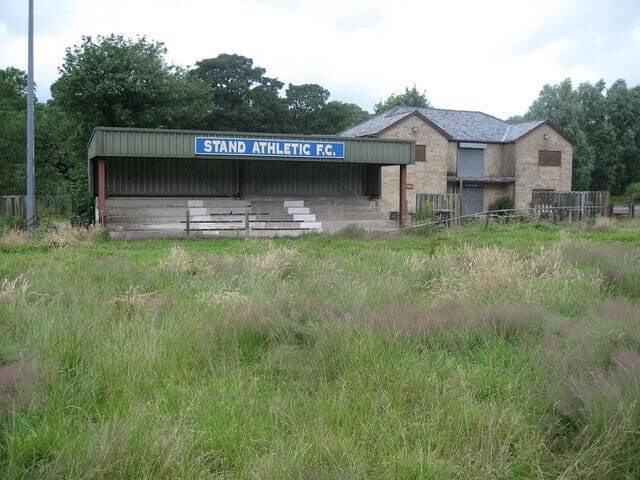
At the time of writing, the land was still on the market at the same price, offering wannabe developers the chance to acquire it and build homes, stores, and schools.
The Astrodome, Houston, Texas
The fanfare that greeted this domed Houston stadium in 1965 was immense. After all, it was the world’s first indoor, air-conditioned and domed stadium. The idea came from the former judge and mayor Roy Mark Hofheinz. The space-age modernist style architecture became home to the Astros baseball team. The Astrodome was nicknamed the “Eighth Wonder of the World” and seated 66,000 baseball and football spectators, with its dome spanning 196 meters.
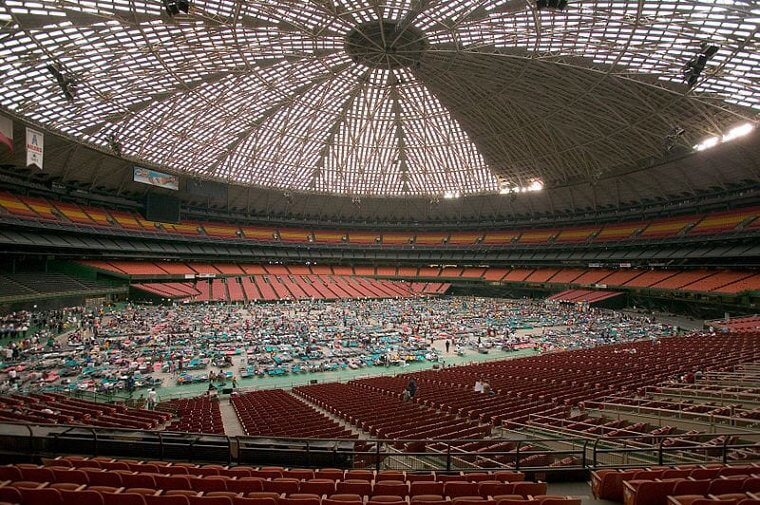
It was added to the National Register of Historic Places in 2014. But, unfortunately, this forsaken space was last used in 2009 and is at risk of demolition, with no plans to restore it to its former glory.
Athens Olympic Beach Volleyball Site
Here's another abandoned sports arena in Athens, Greece. We can literally hear the crowds cheering as we look at this picture. The historic city of Athens hosted the Olympics in 2004. But, unfortunately, this former volleyball court is just one example of many fenced-off and abandoned locations from the event. A sad sight for the country that hosted the original games in 776 BC. The 2004 games cost the Greek host nation nearly $3bn, and a medal tally left them in 15th place.
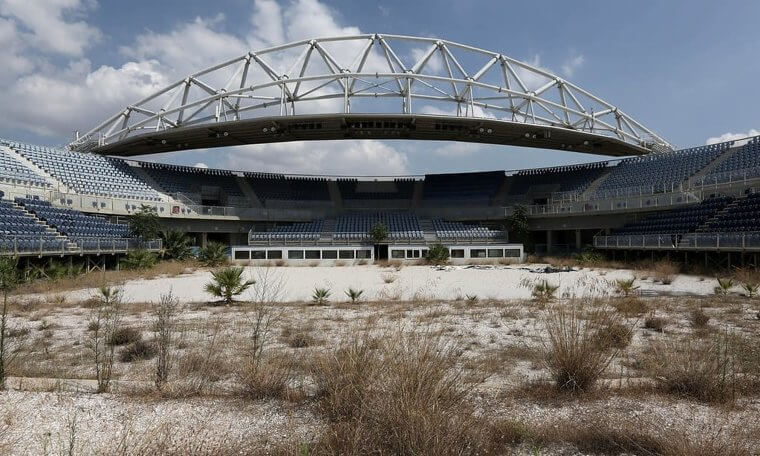
This site and the others, now patrolled by security guards, are a sad reminder of a period in modern Greek history that was subsequently linked to the country’s economy tanking.
Derelict Railway Bridge, Pennsylvania
You can just imagine the trains that once took passengers traveling from one side of this river to the other. This image of an abandoned railway bridge in Pittsburgh, Pennsylvania, is one example of many such bridges no longer used. The need for this kind of infrastructure once cars became the dominant way to get around in the US somewhat diminished. As a result, tens of thousands of railroad tracks, including railway bridges, fell into decline after not being properly maintained.
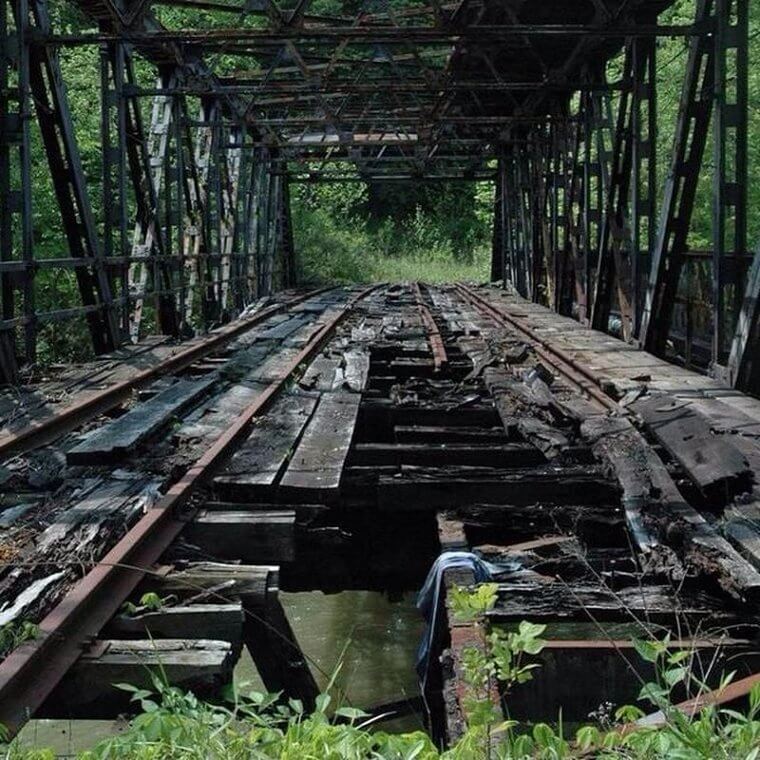
Perhaps the most famous example in Pennsylvania is the 301 feet high Kinzua Bridge, built-in 1882, destroyed by a tornado in 2003 and rebuilt as a passenger walkway in 2014.
Deserted Wooden House, Nebraska, USA
The astonishing light captured here during a magnificent looking lightning storm near Denton village, Nebraska, seems to sit right above this derelict wooden home. The fact that there are no trees nearby only adds to the overall spooky nature of this image taken by Nebraskan landscape photographer Eric Johnson. When observing this shot, it’s easy to allow our imaginations to run into overdrive, wondering who once inhabited such a lonely-looking place.
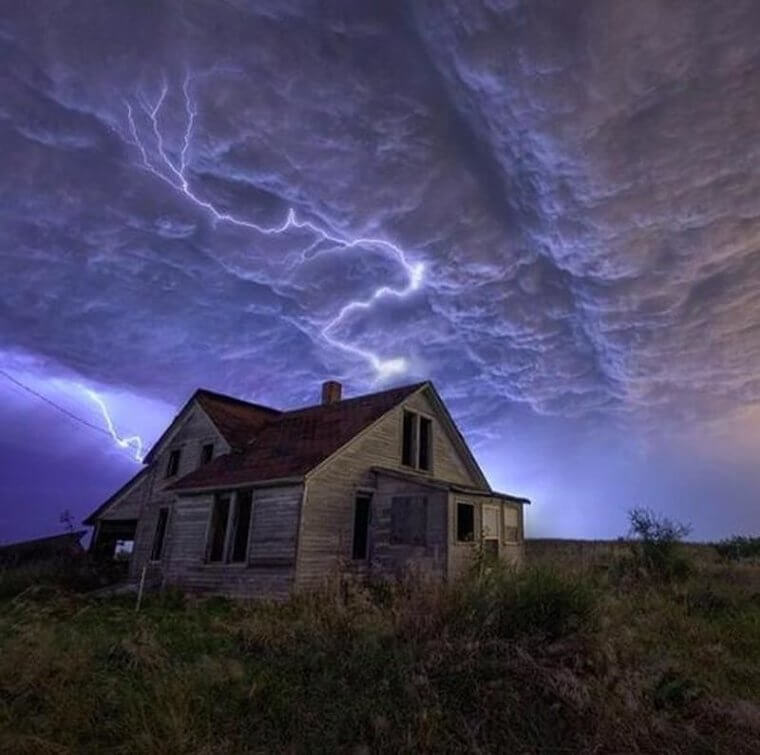
The image is an excellent illustration of nature’s force and unpredictability. The lightning brightens the sky, so much so that you can almost see the deep and menacing purple clouds moving.
Miami Orange Bowl, Florida
Home to the Miami Dolphins until 1986, followed by the Hurricanes until 2007, the Miami Orange Bowl was opened in 1937, costing $340,000 to build. In today’s money, that’s around a whopping $6.12 million. It was initially named the Burdine Stadium and renamed in 1959. The outdoor athletics stadium hosted football and baseball games, as well as large-scale events, including concerts from Bruce Springsteen, the Rolling Stones, Prince, and Madonna.

President John Kennedy made his famous Cuban missile speech here in 1962. However, the Orange Bowl was demolished in 2008. Fast forward to today, and it's now LoanDepot Park, home to the Miami Marlins baseball team.
Abandoned Railway Tunnel, Australia
This abandoned Helensburgh tunnel and track is located in New South Wales, Australia. Nearby a beautiful waterfall cascades. At one point, the tunnel enabled passengers to be transported through the hills between Otford and Waterfall and is one of six. Built in the 1880s, it had a short shelf life, closing in 1915 after smoke and soot built up in the tunnel, making it dangerous for passengers and train crews traveling through it.
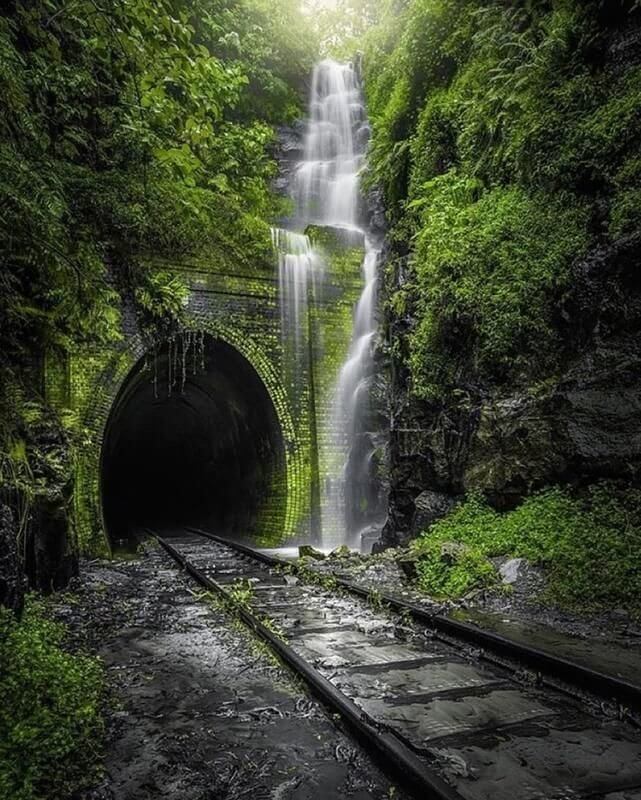
Today, it’s a tourist attraction, with glow worms making the tunnel’s ceiling their home, illuminating the tunnel with a soft bluey-green light. When it floods, people paddle or canoe their way through.
Michigan Central Railway Station, Detroit, USA
This majestic and imposing-looking building was home to Detroit’s railway station and was built between 1912 and 1913. Often referred to as MCS, the station was a three-story depot and an 18 story office tower. The first train left the station on 26 December 1913 at 5.20 pm, bound for Saginaw and Bay City, Michigan. Two hundred trains left the station every day at the height of World War I.
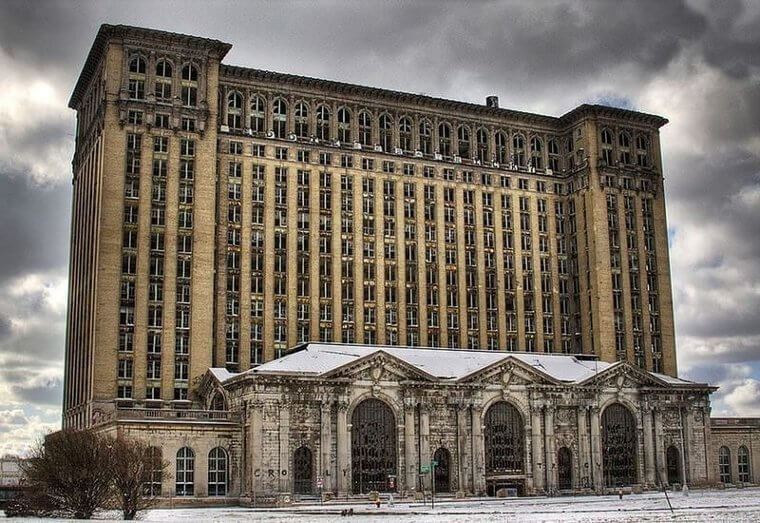
The military also used the station during World War II. However, when train use declined, the station closed in 1988 and was sold in 2018 to the Ford motor company, which has plans to develop self-drive vehicles at the site.
The Colosseum, Rome, Italy
Built in the center of Rome, work on this giant amphitheater began between 70 and 72 CE under the rule of Emperor Vespasian. The stone and concrete construction are freestanding. Around 50,000 spectators watched gladiators fight it out to a bloody end in its heyday. The arena was also flooded so it could host mock naval engagements. Unfortunately, much of the site has fallen to weather, vandalism, and earthquake damage.
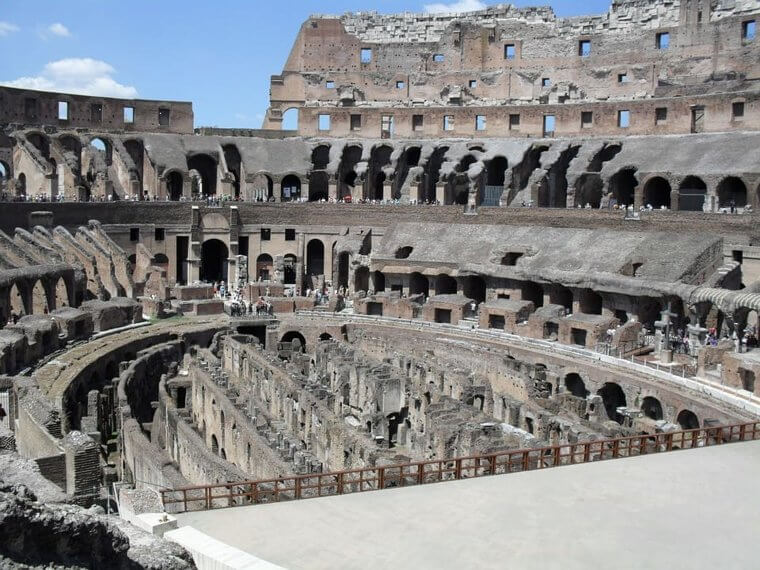
Today, the site is a must-see tourist attraction that can’t be missed when visiting the Italian capital, with 7.6 million visitors in 2019, pre-pandemic, dropping to 1.1 million in 2020.
The Wreck of the SS America
The SS America was built in 1940 and made its final journey in 1994 when it was shipwrecked off the coast of Canary Island Fuerteventura in the Atlantic Ocean. It has a varied history, being used both as a passenger ship and a Navy ship in World War II. In the largest espionage conviction in US history, two crew members were discovered to be Nazi spies and were eventually convicted.
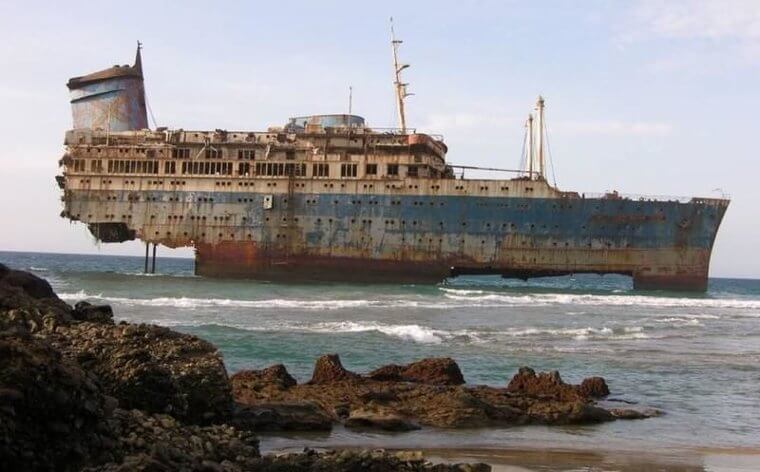
Today, the wreck has deteriorated and collapsed into the sea and can no longer be seen above water. Instead, it's become an artificial reef for marine life in the area.
An Underwater Sculpture Park in Grenada
This here is an image of a great site in the Caribbean Sea at the Molinere Bay Resort in Grenada. The Grenada Underwater Sculpture Park is the first of its kind. Created by British sculptor Jason Caires Taylor, it first opened to the public in 2006. This image is just one of the works found by the sculptor in the clear waters of the Caribbean island.
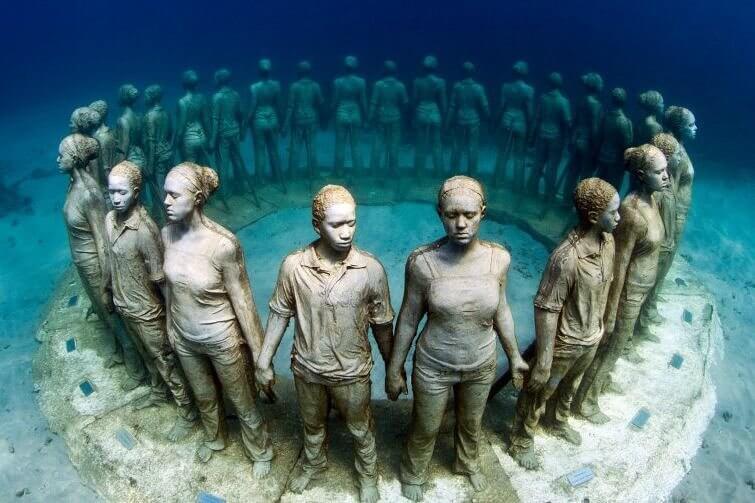
Visitors can view this and 74 other concrete sculptures, including Christ of the Deep, by taking a snorkeling or diving trip. They are found around three to five meters below the water.
The Abandoned C-121 Plane, Antarctica
On 8 October 1970, the two pilots flying passengers from New Zealand in the Pegasus, a C-121 Lockheed Constellation aircraft, encountered a severe storm above Antarctica. The storm was so intense that they couldn't turn back to their departure point and instead had to fly on. Unfortunately, the weather caused it to crash and slide on the ice before stopping close to the McMurdo research station, the largest in Antarctica.
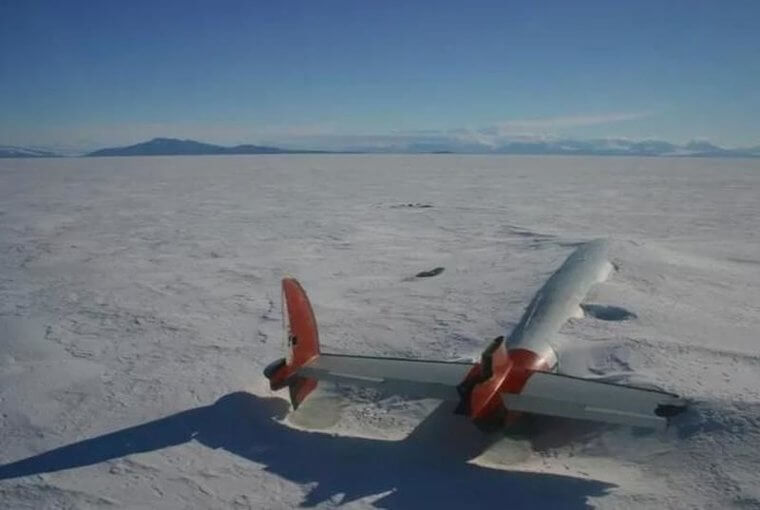
Thankfully, all 80 people on board survived. Today, the plane is mainly enveloped by ice and snow. However, it hasn’t stopped visitors from taking photos like this or scratching their names on the fuselage.
